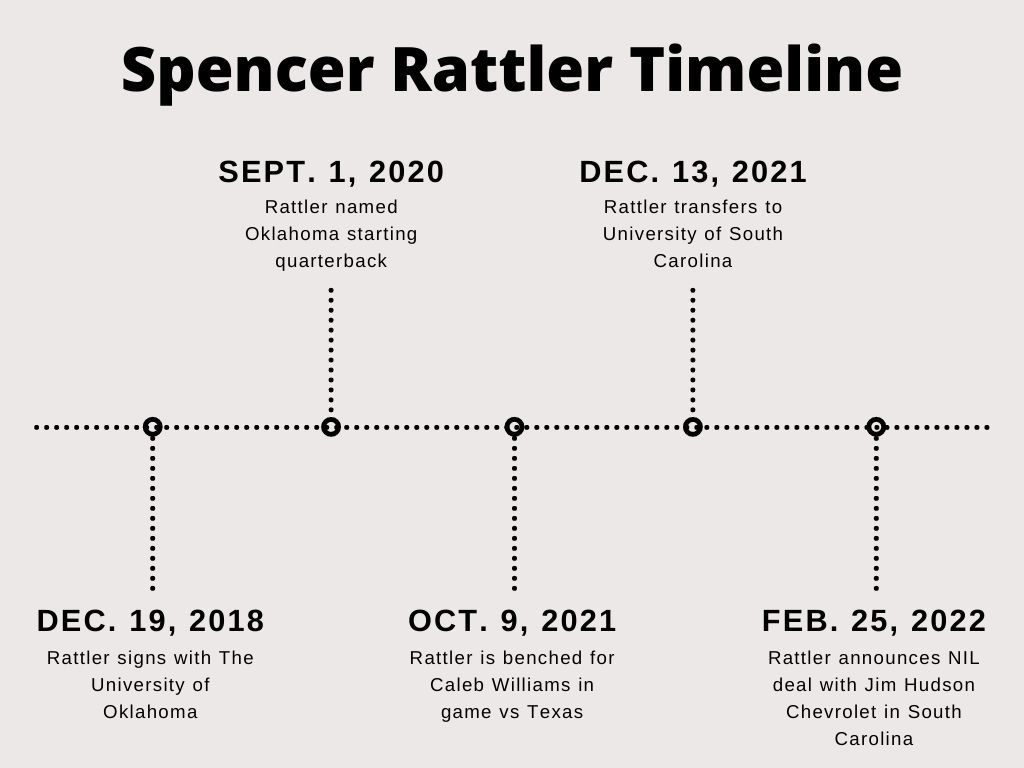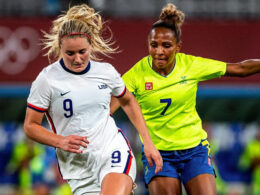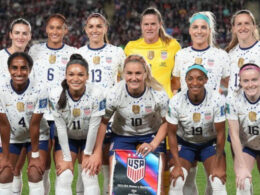By Ryan Bologna
We are in the early stages of the NIL and one-time transfer era in college sports. We are still figuring out who it helps and who it hurts. Let’s dive into it.
Logistically one of the biggest beneficiaries will be schools that have big fan bases in areas with no professional sports teams. Schools like Alabama, Arkansas, West Virginia, and Nebraska are examples. They are the main sports focus of their areas, so NIL will make those destinations more desirable for recruits because they provide more opportunities for deals and brand building.
The top-rated recruits will still end up going to the established top programs, as they already have big branding opportunities and have a foothold on those players already. One of the biggest examples of this already happening is with the UConn Women’s Basketball program. They were already landing tons of top recruits, but after Azzi Fudd filmed a TikTok commercial with Allen Iverson in addition to NIL deals with Chipotle and American Eagle in just her Freshman year at UConn it strengthened their pitch even more.
Despite this, NIL deals can benefit “second-tier” programs. For the most part NIL deals will go to the star players, leaving depth players at top schools hanging with little NIL opportunities and less playing time. That could result in schools like Alabama and Ohio State not getting those four-star recruits for depth as much as they did before.
As a four-star recruit, why go to Alabama or Ohio State and sit behind a five-star player for a couple of years while they get the NIL deals and playing time? A program like Purdue can offer the potential of more exposure and playing time for those players. It could even lead to a faster path to the NFL for some like it did for Rondale Moore. He never would have gotten playing time over players like Jaylen Waddle at Alabama, but he became a star at Purdue and got picked in the second round of the 2021 draft.
Schools with ties to companies are in a position to benefit as well. Oregon is one of the biggest examples due to its relationship with Nike. They beat out Alabama for edge rusher Kayvon Thibodeaux in 2019, and he just recently cited that as to why he chose Oregon. Maryland is a school to watch for, as they are trying to create a similar dynamic with Under Armour.
The new one-time transfer rule impacts the top recruits that do not succeed right away and look no further than the roller-coaster season that Oklahoma football just had. Spencer Rattler came into the season perceived as a star and potential first-round pick in the 2022 NFL draft. He struggled early on, and he eventually got benched in the middle of their game against Texas.
Caleb Williams came in and heroically brought them back to win the game, making Oklahoma fans believe they have a solution. Then late in the season Williams and Oklahoma lose a heartbreaker to Oklahoma State to miss the Big 12 title game. To top it all off Head Coach Lincoln Riley left for Southern California, and Williams decided to transfer as well. Where did he end up? You guessed it, Southern California.
Rattler did manage to maintain success with NIL deals despite his lack of success on the field, as he secured a deal with a South Carolina Chevrolet dealership.

All in all that is a bad fan experience for Oklahoma fans, they lose their head coach and their quarterback to the same school. Many fans, including myself, will not have any empathy for Oklahoma fans. But these rules impact the little guy as well.
Look no further than St. Peter’s sensation Doug Edert. He is trying to capitalize on his popularity by transferring to a school that will make him more visible. This will be a common trend for breakout players from small schools in all college sports, and there is not much that can be done to prevent this from happening.
These factors create concern for mid-major programs. Schools that find diamonds in the rough will have a tougher time than ever retaining their talent, as those players will no longer be required to sit out a year and can not offer the same opportunities for NIL deals.
In totality NIL deals and one-time transfer, rules have benefits and drawbacks for the fan experience. I think the most likely outcome is that the top programs see minimal change if any, while second-tier programs benefit significantly and lower-level programs get hurt the most. The fan experience is either helped or hurt depending on what programs you follow.
Picture Credit: Kasey Moody




